Looking for a new manga series to add to your evergrowing To Read pile? Well, you’re in luck, because Kotaku Australia’s resident anime and manga geeks – Alinah, Courtney and Chris – have put our heads together and compiled a few recommendations for the best things we’ve read over the past month. Some old, some new.
This time around, we’ve got a series about a genius waiter keeping a struggling restaurant alive, a team of problem solvers working in a city’s seedy underbelly and a high-energy action series about aliens and ghosts that gets very weird.
Here are our favourite manga that we read this month.
Have you also read any of these series? What did you think of it? Is there a manga that you think we should be reading? Let us know in the comments!
Table of contents
The best manga we read in March
Dandadan by Yukinobu Tatsu
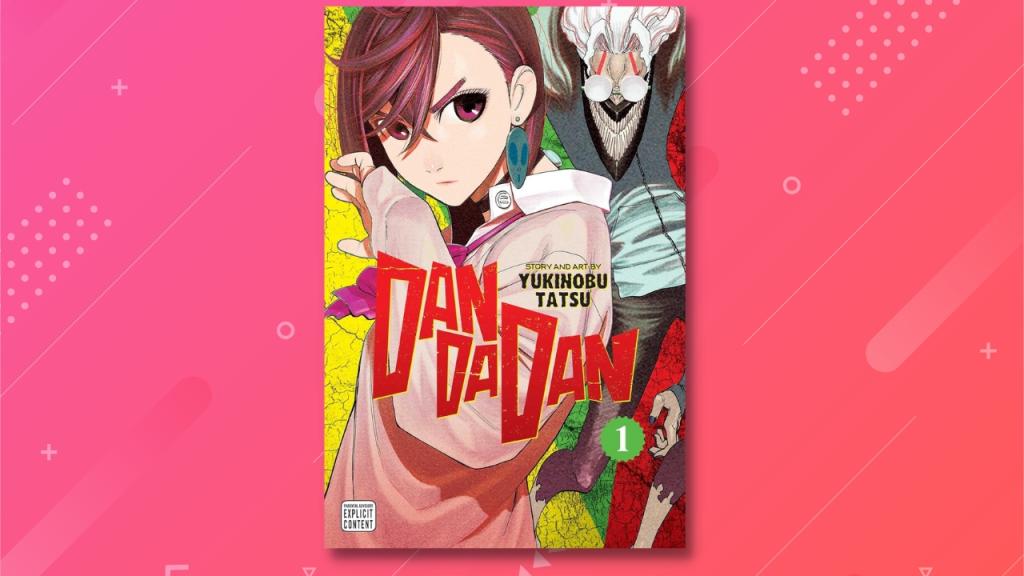
Yukinobu Tatsu’s Dandadan has been on my radar, but the trailer for the upcoming anime adaptation flipped the switch for me. I smashed through the first two volumes of Dandadan in an afternoon and I regret not picking this up sooner.
On the surface, Dandadan feels like a fairly standard shonen manga. It follows two high-school students – Momo, who is outgoing and believes in the supernatural, but not aliens. Meanwhile, Okarun is an introverted nerd with no friends who believes in aliens, but not the supernatural. As it turns out, they’re both wrong – ghosts and aliens are both very real. Hijinx ensues, which results in both students gaining fantastical powers that they need to master while fighting monsters.
Nothing in that pitch is groundbreaking, but what makes this series stand out from some more generic fare is that Tatsu isn’t afraid to get ridiculous with his execution. There’s a high energy to his writing and art that’s just so much fun to read. His art in particular is a treat. I love how he draws these dynamic action sequences with gloriously creepy monster designs and then pivots to these exaggerated, cartoony reactions. The big monster fight that takes up the majority of Volume 1 is just all-around cool.
While it might feel conceptually familiar, Dandadan has a heap of personality and the general weirdness makes it stand out creatively. As it turns out, Tatsu was an assistant on Fire Punch and Chainsaw Man, which explains why this series’ subversive and goofy nature. Birds of a feather.
– Chris
Read it here:
Dr. Stone by Riichiro Inagaki and Boichi
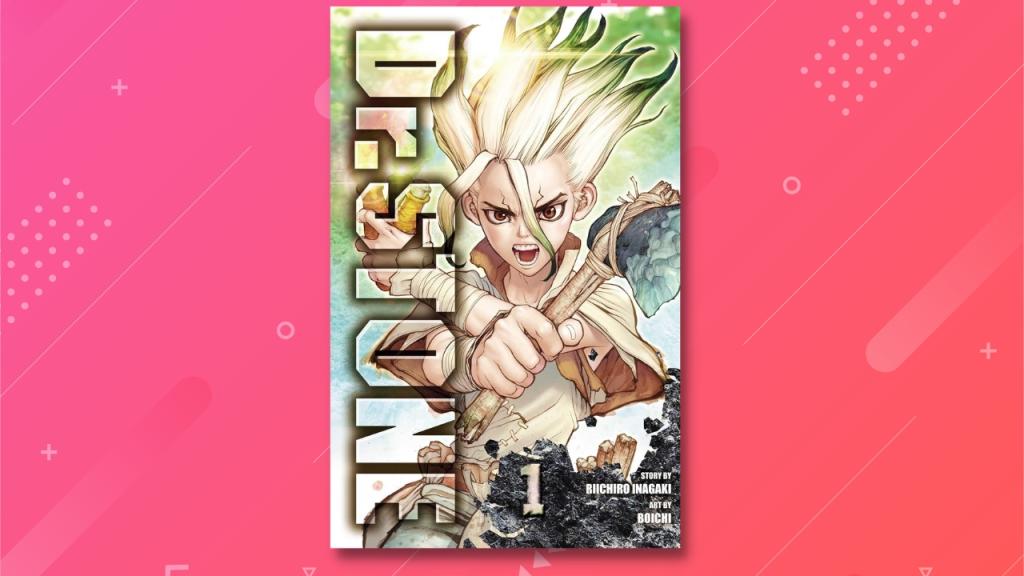
When it comes to manga, I really enjoy reading series that have already been adapted into anime, especially if they’re popular. Think Naruto, Bleach, and Ouran High School Host Club. Reading the source material usually gives a different perspective on the series as a whole and you can enjoy it at a slower pace. This is why I decided to pick up Dr. Stone.
The series begins with the whole of Earth being turned to stone. Thousands of years pass and Senkuu, a genius student from Japan has freed himself and is working to help wake up the rest of humanity from its stone slumber. But, of course, restoring the human race to its former glory isn’t as easy as just releasing everyone from petrification.
Senkuu needs to speed-run the Stone Age while protecting humanity from new and old threats. Which includes people who have woken up and gone insane, and whole new human societies that have appeared during the absence of the ‘original’ human race.
What I love most about this series so far is that even though it’s heavily themed around science and chemistry – things that I’m not really interested in – it’s all explained well and makes sense in terms of the story. Even if the stakes are high, there’s always a solution that can be reached with science, which is really satisfying.
Overall, Dr. Stone is just a fun and easy read, so if you’re looking for a manga to relax with, I can’t recommend it enough.
– Courtney
Read it here:
Gokurakugai by Yuto Sano

Gokurakugai is a series that’s flown under the radar for many – but you might have heard some noise around the initial one-shot chapter that was published back in 2020.
The initial one-shot, and the following series, are set in the seedy underbelly of a bustling city, which has hints of influence from Chinese culture. The catch here is that this world sees humans cohabitating with “beastmen”, human-animal hybrids that were undeniably designed to appeal to a very specific market. The central characters are the red-haired Luffy-esque shonen protagonist Alma, and the Glock-toting dommy mommy (I’m sorry) Tao. The two run an agency taking odd jobs for those turning to their last resort.
When I initially read the one-shot chapter years ago, I couldn’t stop thinking about it. Not just because of Tao and her… personality, but because the portrayal of the criminal underworld, and the consequences on those living within it, felt like the realest I’d seen (despite all the catgirls).
I kept an eye out for a potential serialisation, and while my hopes were answered, it felt a bit like a Monkey’s Paw situation. In what I assume was a push from higher-ups, mangaka Yuto Sano made Alma a secret half-demon hybrid who can pull a blade from his chest. It’s almost comical how by-the-books this scenario is, and it certainly has me less enthusiastic about the series as a whole. They even robbed Tao of her tattoos, because, of course, they did.
Despite this though, the core focus on the criminal underworld is still there and has me sticking around with reserved optimism. If anything, check this one out to admire the great character design and unique premise.
– Alinah
Read it here:
Goodbye, Eri by Tatsuki Fujimoto
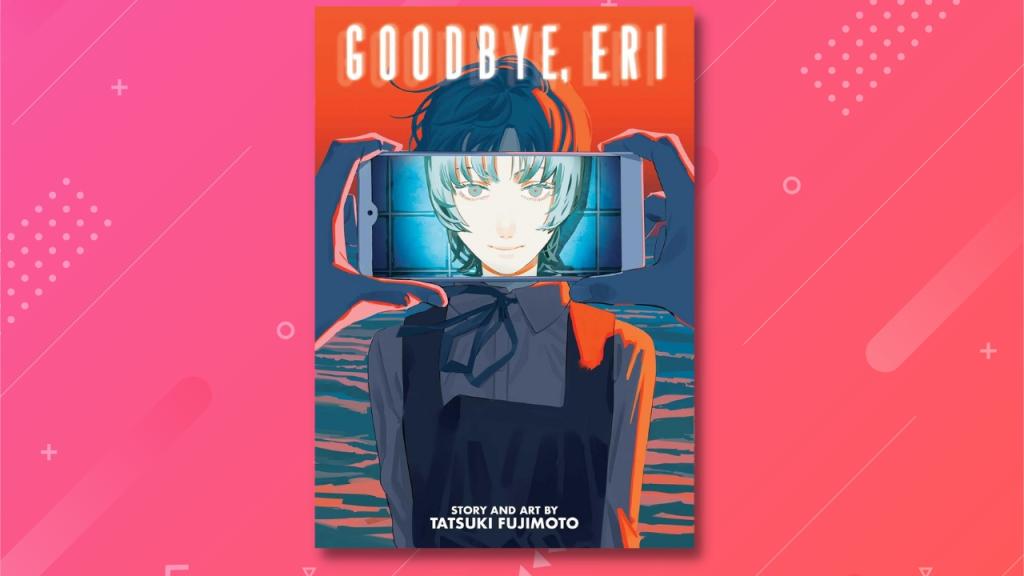
If the only manga you’ve read by Tatsuki Fujimoto is Chainsaw Man, then you are missing out. Goodbye, Eri follows Yuta, a high-schooler who is given a smartphone so he can film his dying’s mothers life up to and including her death. With this footage, he cuts together a documentary about his mum that, while poorly received, catches the eye of Eri, a movie-obsessed student. She sees something in his work and pushes him to work on his craft by filming their lives for another movie.
There’s an ambiguity about Goodbye, Eri that I enjoyed. Fujimoto constantly plays with our perceptions, blurring the line where reality ends and fiction begins. I’m doing my best to avoid spoilers here, but there are multiple moments where real events are revealed to be staged ones, completely changing the tone of what you’ve just read. Who is the person we see on camera, versus who they actually are?
The majority of the comic follows the same layout of four uniform widescreen horizontal panels, which panels mimic the frame of Yuta’s smartphone screen or, when looking at the page as a whole, a strip of film. Knowing what Fujimoto can do with a page, it’s interesting to see how he works within this self-imposed limitation. It’s not a particularly dialogue-heavy book, so a lot of it is told through body language and expressions. Fujimoto will occasionally give a panel an effect that mimics camera shake. It’s a nice touch for immersion, that we’re watching footage from Yuta’s phone.
I hope Fujimoto is afforded the time and space to do more work like Goodbye, Eri and Look Back. While I’m a big fan of Chainsaw Man, I like what he’s done with these comparatively quieter, character-driven works. It’d be a shame if he doesn’t do more manga like this, because Goodbye, Eri is great.
– Chris
Read it here:
Service Wars by Tsurun Hatomune

Service Wars is so ridiculous that it’ll make you laugh out loud. At least, it made me laugh out loud. A lot. While I was on the train to work. Sorry if you were on my morning commute that week.
This manga only has four volumes, but each one features well-rounded story arcs that help amplify the comedy through sprinklings of world-building. The story follows a small shopping district in Japan that has closed down except for Ajimaru, a small Chinese restaurant. Just as the restaurant’s owners start to accept the harsh reality that they’ll need to close the store, Nasunosuke, a genius waiter finds the small Chinese restaurant and offers to help bring it back to its former glory in exchange for food.
Now, you might be wondering, what exactly is a genius waiter? Well, this guy claims that he was born a waiter. He was serving his mother a glass of water as soon as he left the womb. He’s so good at being a waiter that any time someone tries to serve him, he ends up serving them somehow.
But it isn’t all about being a great server. As soon as the restaurant starts doing well, it starts being targeted by some nefarious customers, including a group of professional complainers known as ‘C.L.A.I.M.’, featuring complainers like ‘Over-order Oda’, and the always cold Mai-san. It’s up to Nasunosuke to help the restaurant stay afloat despite these professional complainers.
While the series is funny, sometimes it gets ahead of itself and falls flat on some of the jokes. But I feel like the constant barrage of earnest ridiculousness is enough to look past the flops and just enjoy the stuff that actually lands. It’s also short enough that a few failed jokes here and there are easy to smile at before moving on to the next chapter.
– Courtney
Read it here:
Spy × Family by Tatsuya Endo

I doubt this one needs an introduction. If you’re even slightly in the otaku space you’ve heard of Spy x Family. Last year, Anya’s little face was plastered over almost every possible product, and this was hard to avoid even in Australia. The debut of the anime was rather explosive, and Season 2 sees it continue to fizzle along – although with admittedly less hype than the initial episodes.
In case you don’t know, Spy x Family follows Twilight, a spy from a thinly veiled version of East and West Germany, working to prevent a fast-approaching war by creating a fake family. He doesn’t realise his newly adopted child is a secret telepath, and his wife an assassin. I think the widespread appeal of Spy x Family comes from Tatsuya Endo’s ability to combine the tropes of a spy thriller with a sickly sweet found-family story, on top of the rare realistic portrayal of a four-year-old.
But, and not to be that person, the manga does do it better. Gag manga can be difficult to translate into anime, and I think this is due to the pace of how it’s read. Often, the best jokes are hidden in little corners and panels that Endo brilliantly tucks into his work, and feel like a reward to find and appreciate. The beauty of reading manga is the ability to take things at your own pace and tailor the timing of jokes to fit your own speed. You can also drink in the little details that the anime has glossed over. I do think it’s worth reading Spy x Family, especially if you haven’t watched it yet.
– Alinah
Read it here:
Tokyo These Days by Taiyo Matsumoto

This is a new book by Taiyo Matsumoto and that fact alone should be enough reason to get a copy. He’s one of those artists whose work I can look at all day. There’s a certain unique texture to his work – it’s in his ever-wiggly line work, the way he seems to scratch shading into the page and how he distorts perspective like he’s drawing the world through a fish-eye lens.
Tokyo These Days follows Shiozawa, a middle-aged manga editor who suddenly quits after the failure of a magazine. With a career that has defined his life now gone, he finds himself adrift, searching for a purpose and reflecting on why he wanted to be an editor in the first place. When he realises that he isn’t fully ready to give up manga, he decides to create a new magazine. His last magazine failed because it lacked passion and purpose – this new book won’t feel empty.
Tokyo These Days is a quiet read. Not a lot happens, but that slowness isn’t an impediment. From chapter to chapter, we follow Shiozawa as he interacts with various mangaka he’s worked with, who all have different relationships with their careers.
There’s the older mangaka who continues to churn out work, even if he’s past his prime and his heart isn’t in it anymore. There’s the young up-and-comer who refuses to listen to his editor’s advice and acts out whenever anything doesn’t go his way. When Shiozawa asks two retired artists to contribute to his book, one refuses because the wounds of his career are still too raw, while the other decides to dive back in because she realises how much she missed it.
Tokyo These Days is about finding meaning in what you do – to create art not because it’s profitable, but because that’s where your heart lies. While popularity brings a steady income, what value is it if you don’t love what you’re doing? If you’re not having fun creating art, then why bother in the first place?
– Chris
Read it here:
Tsubasa: Reservoir Chronicle by CLAMP

Tsubasa: Reservoir Chronicle (I refuse to stylise it correctly) slots nicely under the title of “Manga I Read In My Formative Years And Will Never Forget”.
You might recognise the cover characters from Cardcaptor Sakura, and that’s because this manga was created by the female-led collective of artists, CLAMP. They like to have their characters cross over between series as a fun nod to fans, and it’s a unique fanservice method that I’d like to see more of. There’s a meme about CLAMP character designs being unrealistic, but I actually love the long-limbed, big-eyed campy charm of it all.
Back to the series though – Tsubasa: Reservoir Chronicle features an all-stars roster of CLAMP characters, with a few new additions. The plot focuses on Syaoran’s quest to recover the memories of the recently amnesiac Sakura, in the form of feathers that are scattered across time and space. The two are accompanied by original characters Fai and Kurogane, a wizard and warrior, who each come from their own worlds.
The appeal here is not knowing where this eclectic group will visit next, and being immediately wrapped up in an entirely new culture and genre. The series can go from a murder mystery to a sports manga, and then straight into high-fantasy, all with completely different methods to obtain a feather.
I have a specific bone to pick with the anime for stripping away a lot of the manga’s nuance – especially with its handling of the most plot-twisty ending I’ve read in fiction. Pick this one up, and I’ll let CLAMP do the rest.
– Alinah
Read it here:
The best manga we read in February
Akane-banashi by Yuki Suenaga and Takamasa Moue
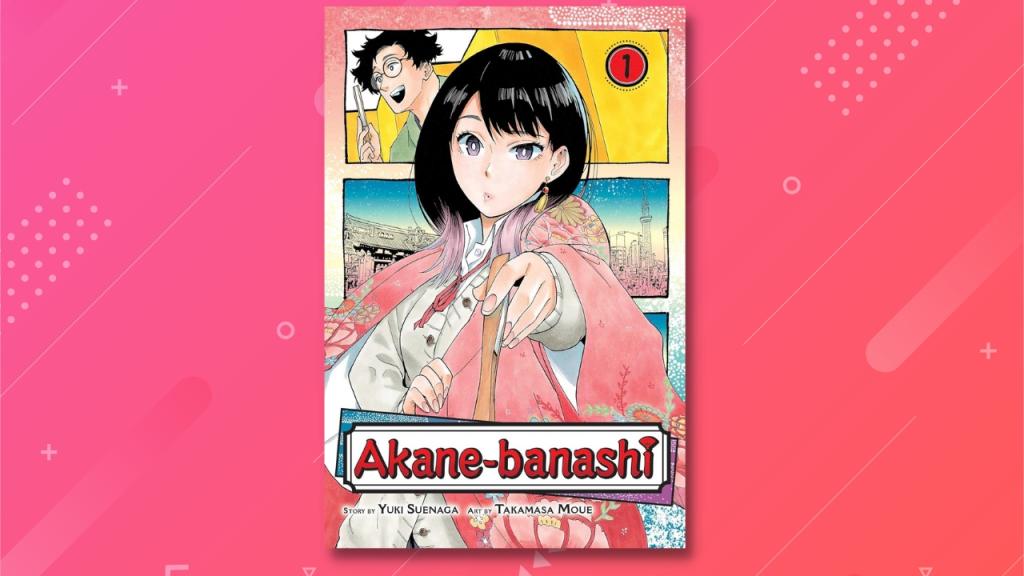
I started reading this off the back of a recommendation, and I’m surprised by how much I’ve been enjoying it. The series revolves around the world of rakugo, which is a one-person performance where the rakugoka tells a theatrical story featuring multiple characters that all have their own unique voice and body language.
The series follows Akane who, after her father is expelled from a rakugo school, declares that she’ll become a great rakugoka. She’s spent six years, secretly studying under her father’s former master and is now ready to take the steps to become an official rakugoka.
I really like Suenaga’s writing – I didn’t even know what rakugo was before picking this up, and so far it’s done a pretty solid job of sucking me in with its characters and pacing. For a series that revolves around people telling stories, it never feels dry.
Moue does a fantastic job on art duties as well. They do a great job of communicating the different characters they’re performing by changing up the facial expressions and body language of Akane and the other rakugoka. Speech bubbles are also drawn differently to show a change in voice, which is a nice touch.
It’s interesting to see how the creators adapt the typical “I wanna be the best” structure of a fight manga series for something that, compared to a series like Naruto or One Piece, feels much more slice-of-life. Fight scenes are replaced with performances while training scenes and mentor characters all revolve around Akane perfecting her performance craft. Akane-banashi has been a refreshing break from the high-energy action series I usually read.
– Chris
Read it here:
Black Butler by Yana Toboso

Now before your eyes glaze over just hear me out.
While the Black Butler anime has many (rightful) detractors, I’ve recently started reading the manga. If not to relive my youthful days of watching anime on YouTube in 30 parts, then to experience the gothic Victorian-era setting that is still rare to see in the medium – and I’ve been pleasantly surprised. I wasn’t aware of just how much the anime deviated from the manga until I started reading. Pretty early on, a lot of the main plot completely changes, down to the main antagonist. It also feels like the gothic vibe is dialled way up in the manga, which pleases my 13-year-old self greatly.
For the uninitiated, Black Butler tells the story of Ciel Phantomhive, a young Earl who inherits the title after his parents are mysteriously killed. He enters a contract with the demon Sebastian, who vows to help him uncover the conspiracy behind his family’s deaths in exchange for the chance to consume his soul. Be careful not to cut yourself on that edge.
The manga feels like the unfiltered, less polished companion to the anime, and has grabbed my attention beyond just being the light reading experience I’d expected. If you also watched (and hyperfixated on) the show as a kid, reading the manga could be a great next step. Just trust me on this.
– Alinah
Read it here:
Burn the Witch by Tite Kubo
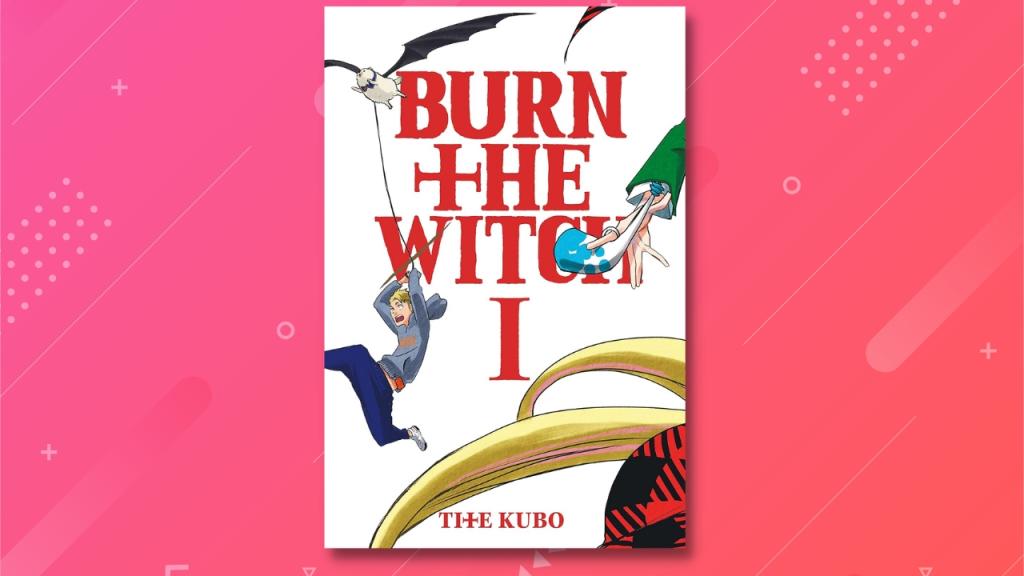
You might not have heard of Burn the Witch, but you’ve definitely heard of the mangaka’s previous work, Bleach. Tite Kubo first released this as a special one-shot back in 2018 set in the same universe, and it got a short anime adaptation. Currently, there are four more ‘limited series’ chapters.
I haven’t read or watched Bleach, but was drawn to Burn the Witch because of a certain character’s design that was perfectly tailored to attract me specifically. This character’s name is Bruno Bangnyfe, and no I’m not joking. While Bruno’s face could have been enough to keep me invested, Kubo’s unapologetic lean into the fantasy genre kept me hooked.
The manga is set in Reverse London, essentially a parallel version of the city where magic is an everyday aspect of life. It follows two witches working for a Dragon Management Agency to promote the coexistence between magical creatures and humans.
Now reading this won’t blow your mind, but I did find aspects of Burn the Witch stick with me after getting through it. If you want to get into something without the threat of 200+ chapters weighing down on you, give Burn the Witch a try.
– Alinah
Read it here:
Chainsaw Man (Vol. 12) by Tatsuki Fujimoto
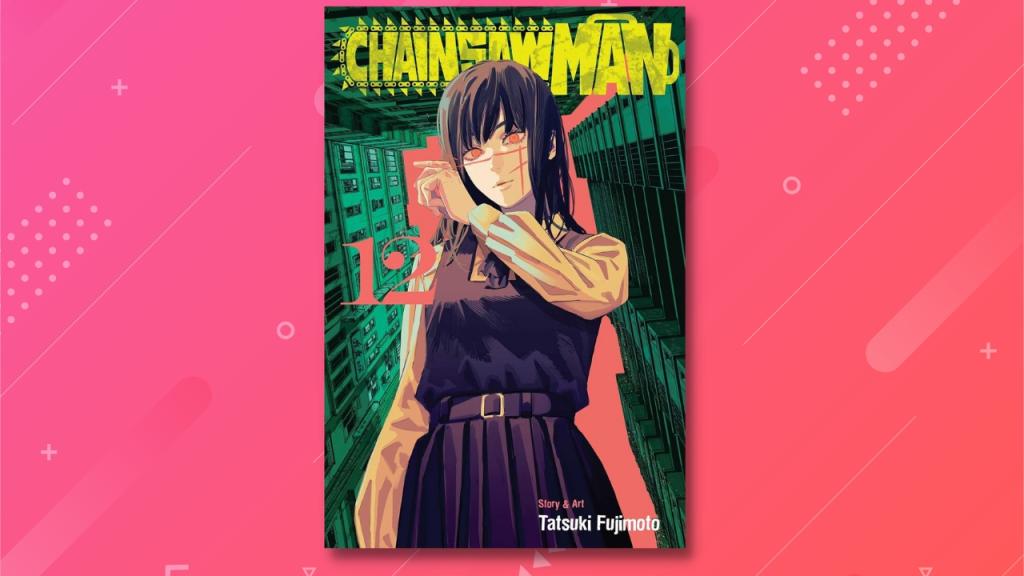
While Chainsaw Man is far from an underappreciated manga, I think it’s high up on the list of misunderstood manga. I, along with I assume many others, took a look at Chainsaw Man and dismissed it as another shonen with an overly horny protagonist whose delusions are played off for laughs.
While I committed to reading the manga, it wasn’t until the end of Part 1 that I really got it. And that’s also the end of what I call the Chainsaw Man prologue – because Part 2 is where things take off. It follows series protagonist Denji as he enters high school, attempting to adjust to life as a regular student after the traumatic events of Part 1. While this might sound strangely slice-of-life, things descend into chaos very quickly.
Part 2 is far beyond where the anime is currently up to (and it might be a while until we catch up), but it’s where Chainsaw Man truly shines – and we have Asa Mitaka to thank for that. The newly introduced secondary protagonist is like a breath of fresh air not only for the series but for manga as a whole, and finally a self-insert “she’s just like me fr” character for the girls.
The manga’s theme of overcoming manipulation to forge a life you want to live is stronger than ever before, and I truly think this is one you need to jump into ASAP – Fujimoto is cooking something big, and you’ll want to be part of it when it all comes together.
– Alinah
Read it here:
Gachiakuta by Kei Urana
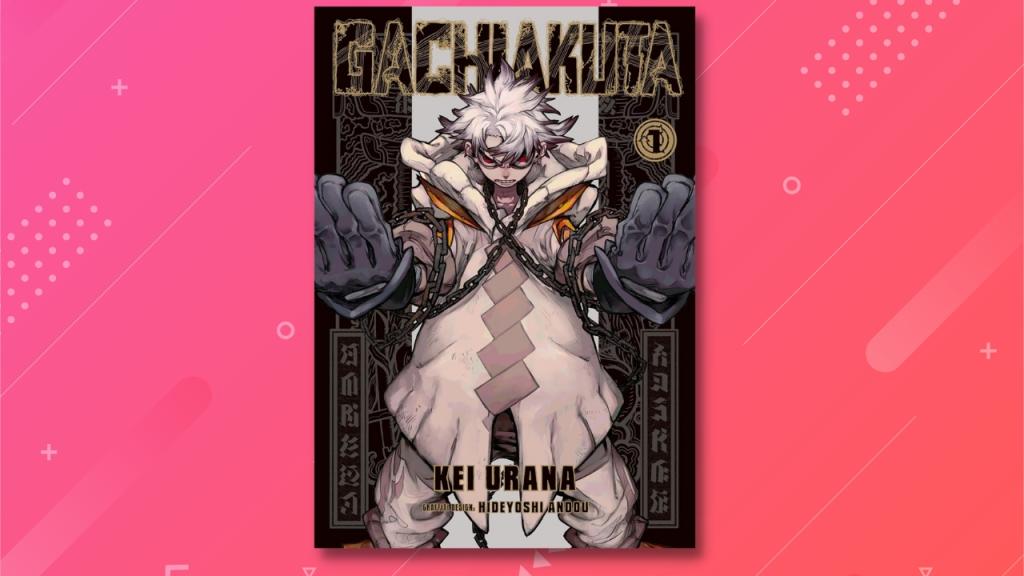
A gritty story with detailed art that flirts with themes of waste, environmentalism and classism in this dystopian manga series.
The manga follows Rudo, a young boy who is framed for the murder of his foster father. The fact that he lives in the slums and spends his day rummaging through trash for treasures that the upper class might have thrown out doesn’t help him prove his innocence. His sentence is death, but when Rudo is thrown into the Abyss, he finds out that the giant hole in the ground is actually inhabited by monsters made of junk and the Janitors – people that use ‘Jinki’ weapons to defeat these monsters.
I love this series because, like all good speculative fiction, it deals with real societal issues. Exploring the impacts of capitalism on not only the environment but also people – resulting in a massive class divide – through a shonen lens is honestly fantastic. Seeing Rudo and the Janitors fight for their lives using ‘junk’ as weapons in a place that’s essentially used as a rubbish tip for the upper classes is fun. The fight scenes are really well drawn and the character designs are gorgeous.
– Courtney
Read it here:
Haikyu!! by Haruichi Furudate
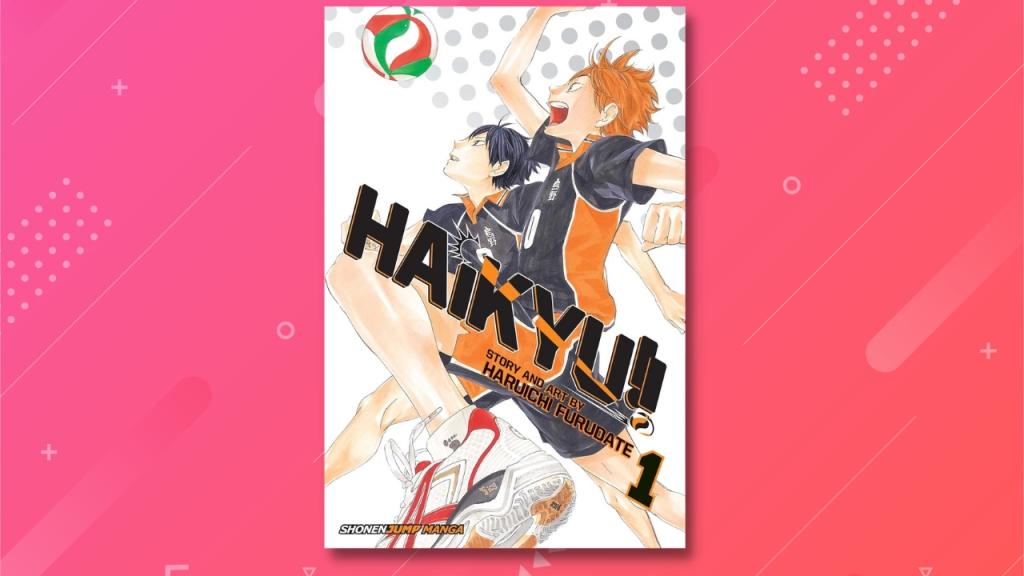
I know, I know. I’m extremely late to the party here. I love sports manga – Slam Dunk, Ping Pong and Cross Game are some of my all-time favourite series – so it’s weird that it’s taken me so long to get around to Haikyu. But I finally started reading it and it turns out this incredibly beloved manga series, is in fact, very good.
If you’re also late to the party, Haikyu follows Shoyo Hinata, who despite his short stature and inexperience, loves volleyball and wants nothing more than to play it. After losing to the extremely skilled but self-centred Tobio Kageyama, Hinata promises that he’ll get good and defeat him the next time they play one another. But things go astray when Hinata and Kageyama both end up on the same high school volleyball team, and now need to learn to work together.
I’m only two volumes in, but I’ve had a great time with what I’ve read so far. There’s a fun blend of different character personalities, and Furudate isn’t afraid to get silly at times. I love how he draws action scenes – the way he bends and stretches his characters is so expressive. Just solid cartooning that conveys the speed and movement of a game so well.
– Chris
Read it here:
River’s Edge by Kyoko Okazaki
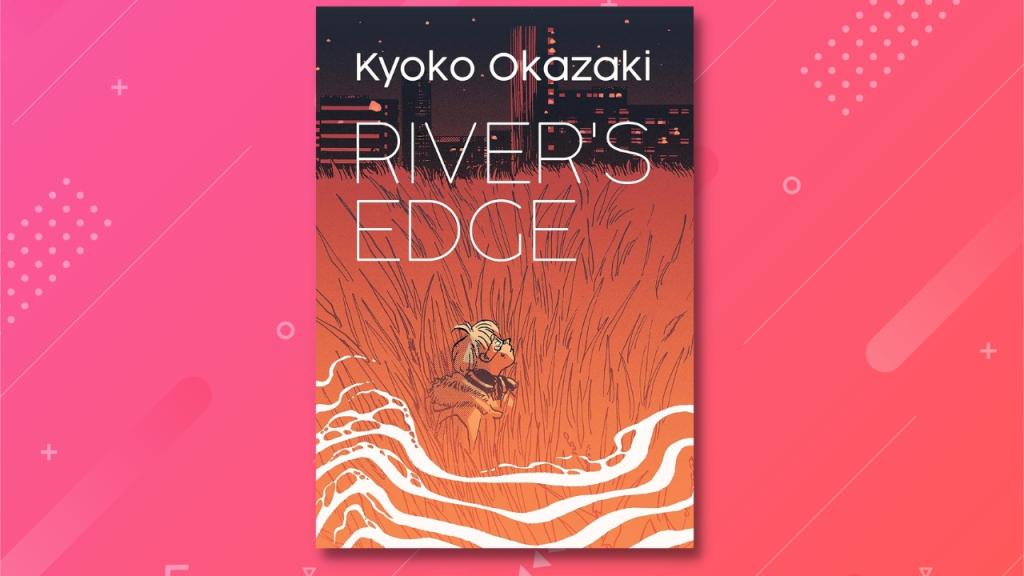
If you’ve read any of Kyoko Okazaki’s other work, then you’ll know what to expect with River’s Edge. Originally published back in the early 1990s, it focuses on the crisscrossing lives and relationships of a group of high school students that feels downright nihilistic at times.
It’s high school drama, emotions are big and everything feels complicated. There’s Wakakusa who is dating the aggressive asshole Kannonzaki, but Kannonzaki is secretly sleeping with Wakakusa’s friend Rumi. Kannonzaki also bullies Yamada, a student who has recently struck up a friendship with Wakakusa. Yamada is dating a girl named Tajima, but that’s just a cover as he’s in the closet and isn’t interested in her at all.
After Wakakusa helps save Yamada when he’s locked in a gym locker after school, he offers to show her his treasure – a decomposing body that’s in a field by the river bank. Yamada didn’t kill the guy, it’s just something he goes to look at when he’s feeling down.
River’s Edge feels shocking at times – sex and violence are the name of the game – but Okazaki does a great job of capturing how aimless and angsty that transitionary state of late high school can be for some. It’s that feeling of wanting or being something else, but not knowing what that is.
More than anything, I love Okazaki’s art – it’s so stylistic and distinct. It’s cartoony and minimalist but with a deft precision. She uses the least amount of lines possible to convey an expression, leaving details for the backgrounds of scenes. This book is probably not for everyone, but it really landed with me.
– Chris
Read it here:
Sakamoto Days by Yuuto Suzuki
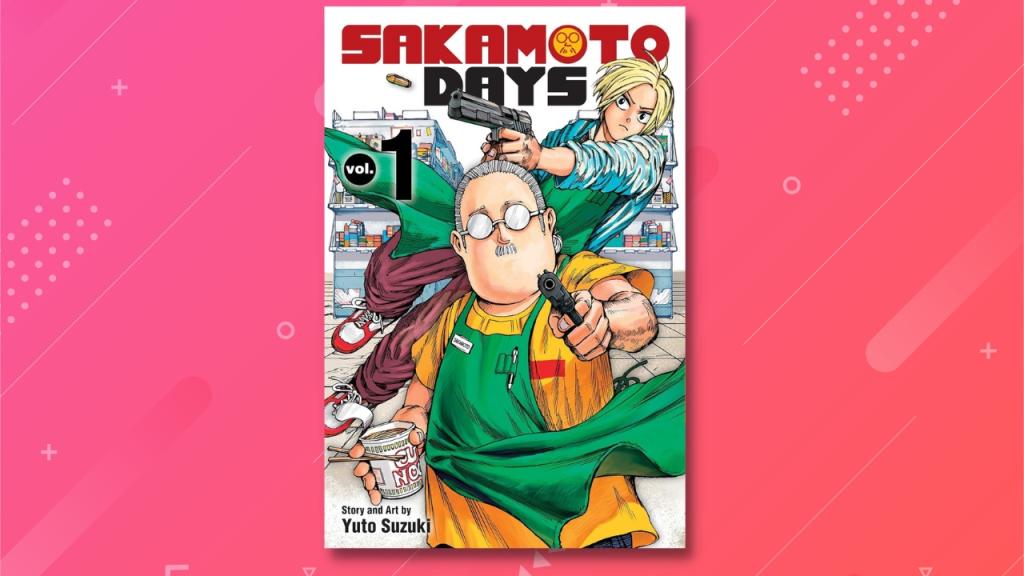
Sakamoto Days is a slice-of-life manga about a hitman who falls in love and decides to quit his life of crime to work in a convenience store.
There’s something really great about manga series that takes the mundane and combines it with the absurd to turn it into extreme gag humour. While Sakamoto Days isn’t the first to do this (The Way of the Househusband and One Punch Man spring to mind), it honestly never gets old.
Each chapter sees our main character, Sakamoto, trying to enjoy his life while being interrupted by the crime syndicate he used to work for. Luckily, he hasn’t lost any of his skills as the world’s best hitman, so he’s able to handle everything they throw at him (literally). The art style also has a nostalgic feel to it. I can’t tell if it’s the character designs, the detailed art or the use of screentones, but it’s easy on the eyes without being too simple.
I’m excited to keep reading this one because an anime is yet to be announced, and I know as soon as it gets an adaptation it’s going to blow up.
– Courtney
Read it here:
‘Tis Time For “Torture”, Princess by Robinson Haruhara and Hirakei

I prefer watching anime over reading manga, but sometimes I don’t get around to watching everything on my list. ‘Tis Time For “Torture”, Princess is one of those anime that I didn’t have time for, but I’m really enjoying the manga.
The series has a simple premise: a kingdom’s princess is captured by a group of demons. To get information out of her, the demons decide to ‘torture’ her. But their methods are… unconventional. They eat different kinds of foods in front of her and engage in fun activities which gives her FOMO so bad that she ends up spilling the tea on her own kingdom. Luckily, both the princess and the demons interrogating her are so silly that all she ever tells them is useless information – that they readily use to try and gain an advantage.
This is a lighthearted manga, with each chapter being around 15 pages in length, meaning it’s a nice and easy read, especially on days when you’re busy. The comedy is pretty basic, but being able to turn my brain off while I watch this princess drool over ramen is just a good time overall.
There are some questionable panels, like when the princess finally gets to enjoy a bite of food ( we’ve all been there). But it’s generally pretty wholesome.
– Courtney
Read it here:
Image: Viz Media/Kotaku Australia
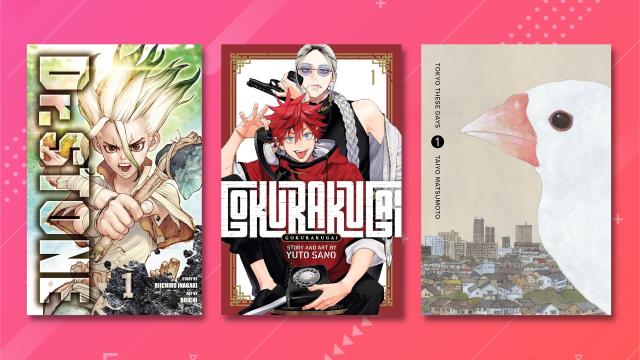
Leave a Reply